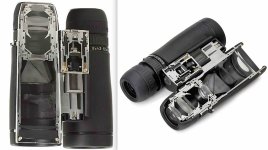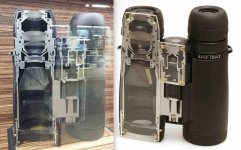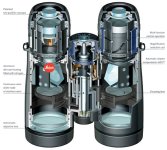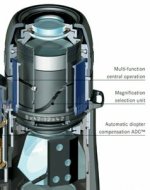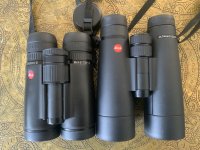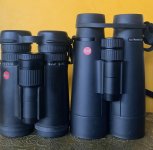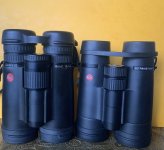Correction: the Magnification Change Mechanism is more complex than previously described.
Since my earlier posts I’ve collected additional cutaway images of the 8+12x42 Duovid, and looking at them more closely
makes clear that the change of magnification function is more complex than I previously thought.
The eyepiece consists 7 lenses in 4 groups, in 2, 1, 2, 2 configuration. And while the eye lens group is fixed,
the other 3 groups all move, though in a non-linear relationship when the magnification is changed.
As can be seen:
a) When the second and third groups are in their rearmost position,
the front group is maximally extended (almost contacting the rear prism face).
View attachment 1566678
b) But when the second and third groups are in their foremost position,
the front group is retracted from its previous position.
View attachment 1566679
The second image in the top pair is from the liveauctioneers site,
and the second image in the bottom pair is from a 2023 ebay listing by prinzessinalexa.
The complexity of the required movement may help to explain the generally lacklustre performance of binoculars with a continuous zoom function
(and why Leica chose to limit the Duovid to switching between the minimum and maximum magnification).
John








